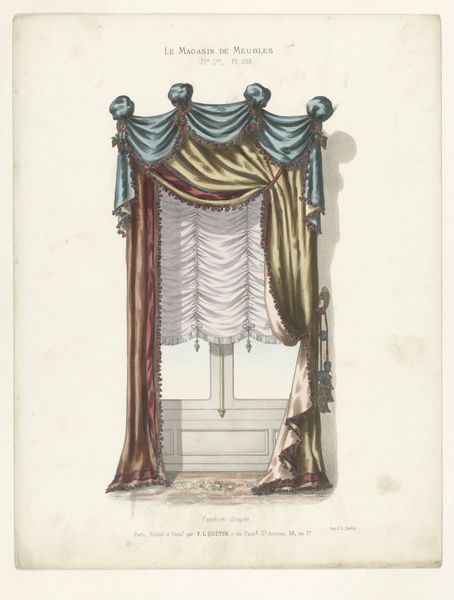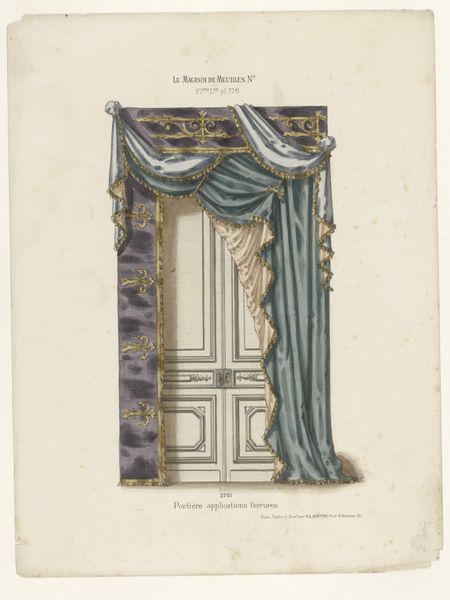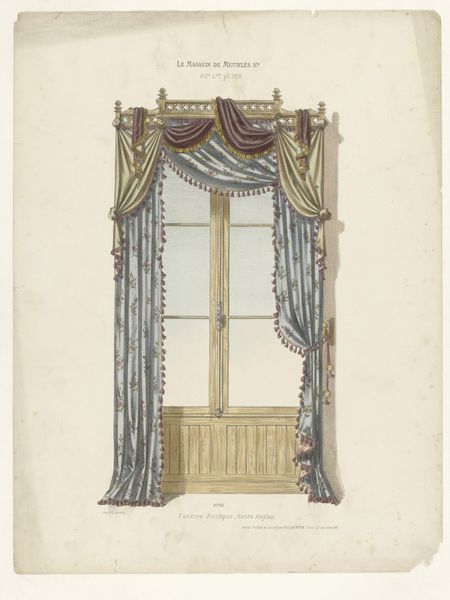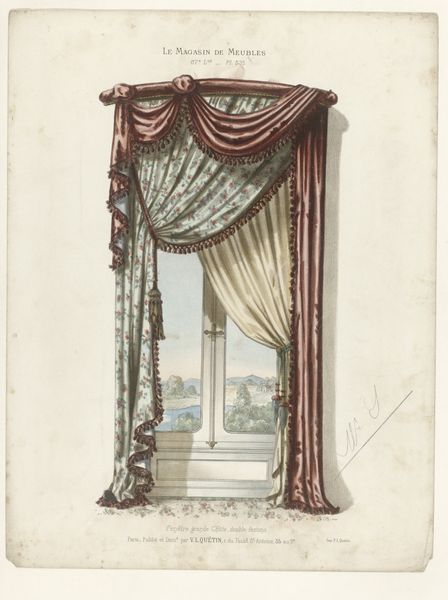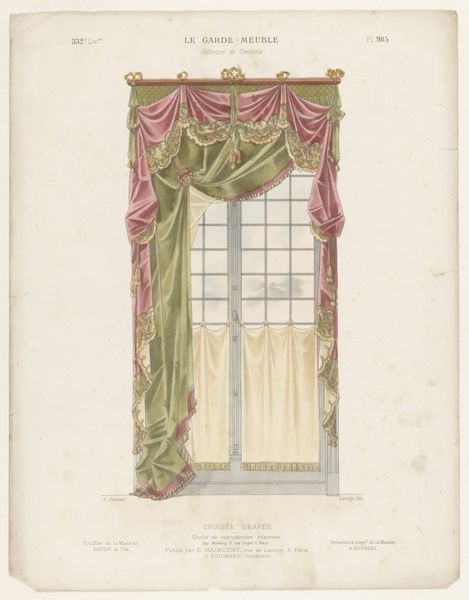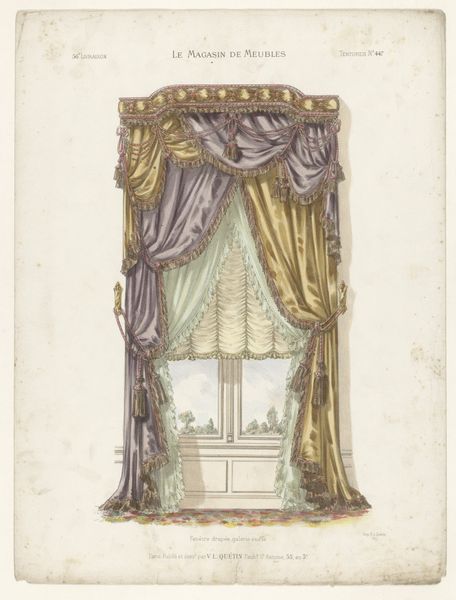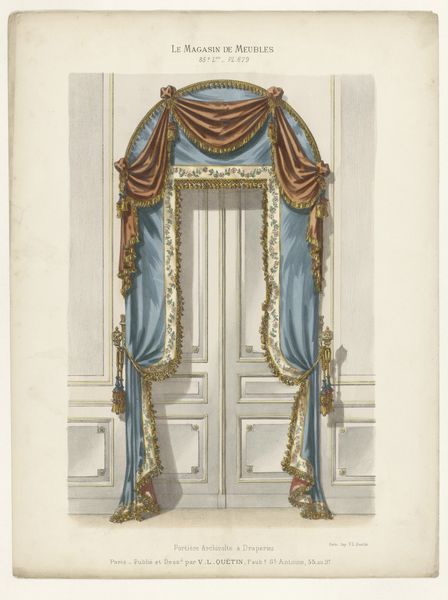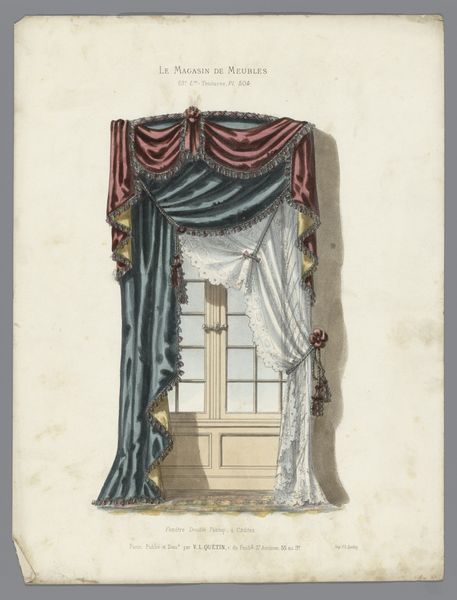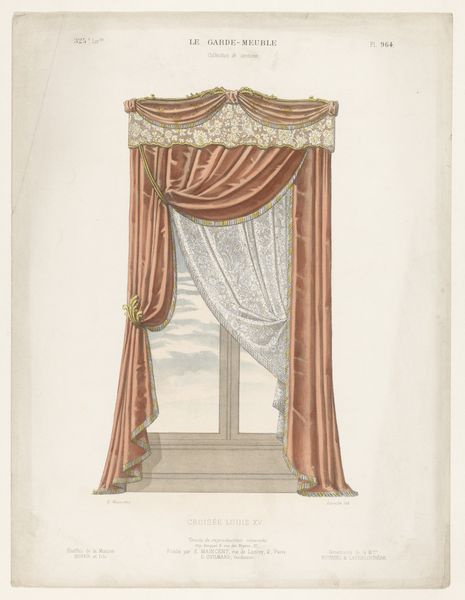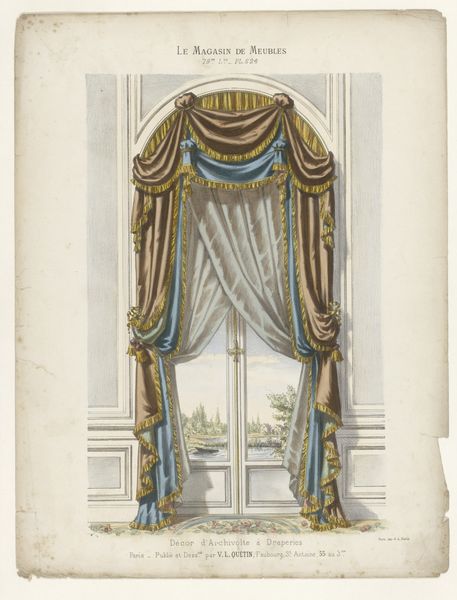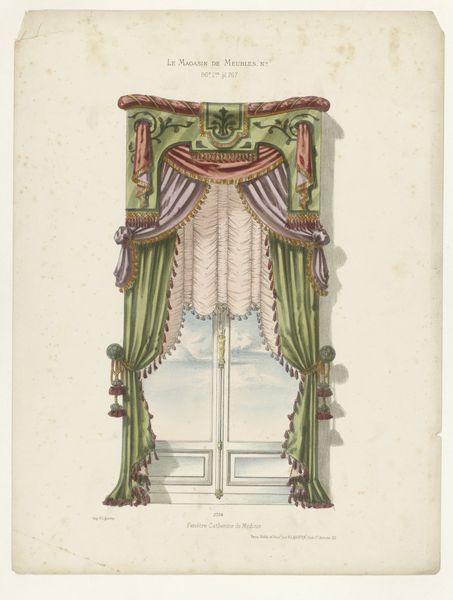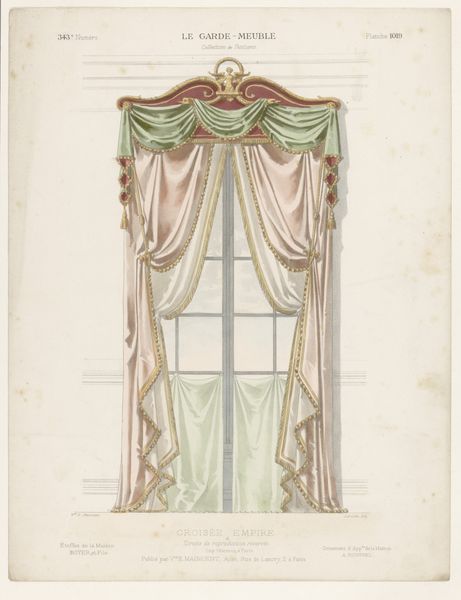
Dimensions: height 357 mm, width 275 mm
Copyright: Rijks Museum: Open Domain
Curator: This piece, entitled "Venster met gordijnen," or "Window with Curtains," comes from after 1878. It employs drawing, print, and watercolor to create a detailed interior scene. My immediate reaction is that it evokes a sense of controlled elegance—a somewhat formal, almost theatrical presentation of domesticity. What's your take? Editor: Well, first of all, let's address the title; it’s crucial to ask about whose window this is, who is looking out, and what this representation of looking ‘through’ allows. From my vantage, it appears as a representation of aspirational domesticity. What does the decorative curtain represent at a point in history when industrial modes of production facilitated cheap fabrics that then allow greater social groups to engage in domestic interior decoration? Curator: That’s a solid point. Looking at the production, the combined use of printmaking with hand-applied watercolor suggests a process somewhere between mass production and bespoke artistry, offering a glimpse into material culture. It seems like a fascinating study of how decorative arts were circulated. Editor: Absolutely. We also need to consider how such imagery reinforces the boundaries of class and gender. Think of the labor required to create and maintain such ornamentation. How many women’s work, often uncredited, underpinned these displays of bourgeois taste and status? This connects to a larger, historical exploitation that still impacts marginalized communities today. Curator: That consideration invites a deeper reflection, really questioning the layers of labor woven, literally and figuratively, into these visual signifiers of wealth and aspiration. You’ve shifted my understanding considerably; rather than an innocent illustration, this image serves as a rich historical artifact of social relations. Editor: It is precisely this convergence of visual culture and political consciousness that renders artworks like these important. As a historical image, this invites considerations on taste and decor, and their connection to complex structures of power that still shape our society.
Comments
No comments
Be the first to comment and join the conversation on the ultimate creative platform.
